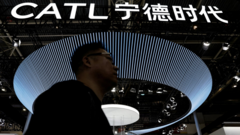Why electric vehicle brand Rivian is thinking long-term amid economic uncertainty
As economic uncertainty and talk of recession intensifies, automakers face an uphill battle in everything from tariff impacts on production costs to fluctuating consumer spending in response to inflation.
The uncertainty has left marketers shaken because it’s historically meant cuts to marketing budgets. But as one of the biggest spending categories in media and marketing, auto makers aren’t ready to take their foot off the gas just yet. To put some numbers to it, automotive media spend in the U.S. is expected to hit $31.77 billion this year, up from $29.48 billion in 2024, according to eMarketer.
In January, Digiday reported auto marketers aren’t slowing ad spend in light of tariff tension. Recently, Digiday caught up with Denise Cherry, vp of marketing at Rivian, an electric vehicle company, about how the car brand is navigating economic headwinds, why it’s launching its first ever brand campaign now, and planning for the long term amidst uncertainty.
Continue reading this article on digiday.com. Sign up for Digiday newsletters to get the latest on media, marketing and the future of TV.








